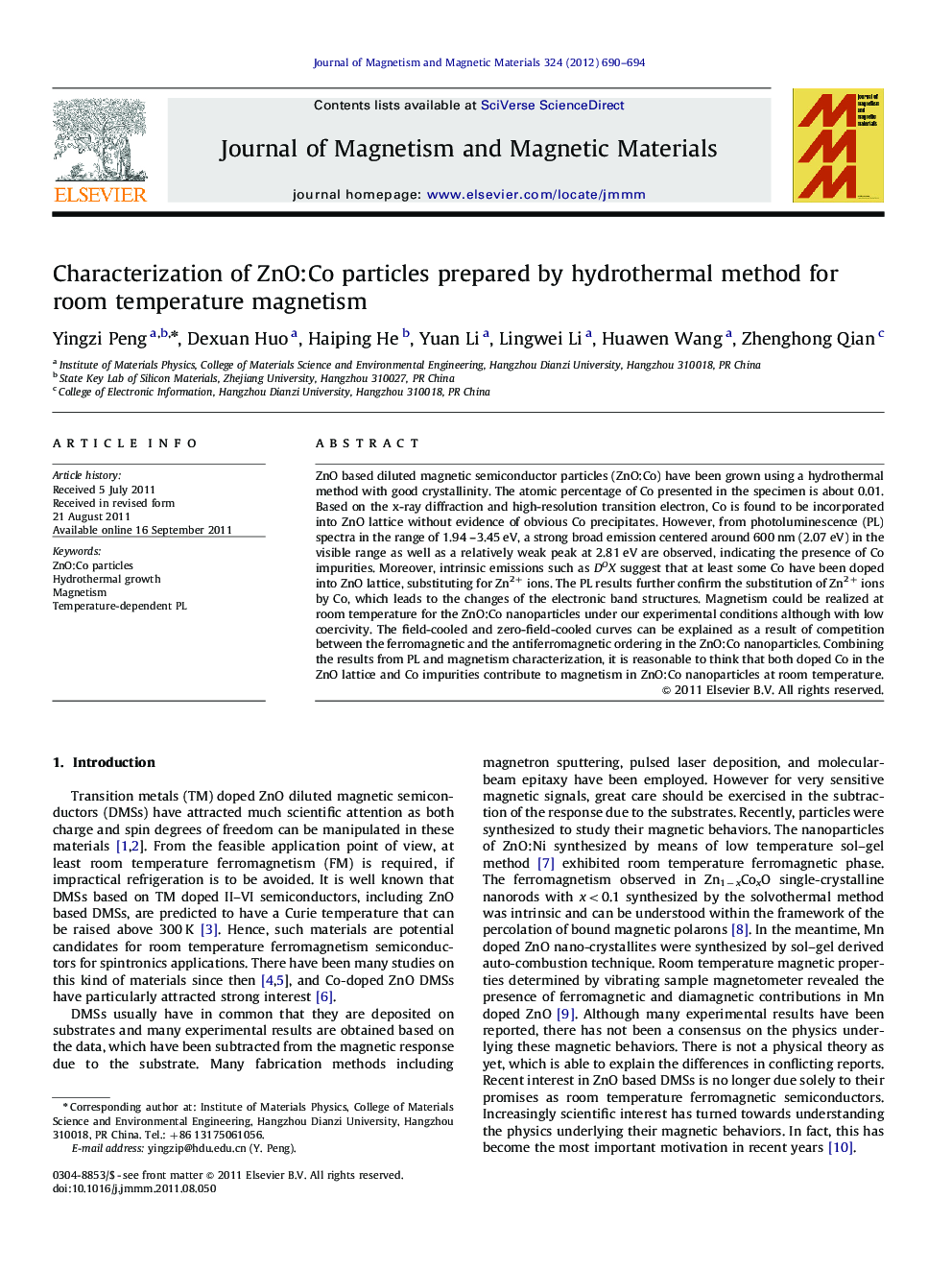| Article ID | Journal | Published Year | Pages | File Type |
|---|---|---|---|---|
| 1800210 | Journal of Magnetism and Magnetic Materials | 2012 | 5 Pages |
ZnO based diluted magnetic semiconductor particles (ZnO:Co) have been grown using a hydrothermal method with good crystallinity. The atomic percentage of Co presented in the specimen is about 0.01. Based on the x-ray diffraction and high-resolution transition electron, Co is found to be incorporated into ZnO lattice without evidence of obvious Co precipitates. However, from photoluminescence (PL) spectra in the range of 1.94 –3.45 eV, a strong broad emission centered around 600 nm (2.07 eV) in the visible range as well as a relatively weak peak at 2.81 eV are observed, indicating the presence of Co impurities. Moreover, intrinsic emissions such as DOX suggest that at least some Co have been doped into ZnO lattice, substituting for Zn2+ ions. The PL results further confirm the substitution of Zn2+ ions by Co, which leads to the changes of the electronic band structures. Magnetism could be realized at room temperature for the ZnO:Co nanoparticles under our experimental conditions although with low coercivity. The field-cooled and zero-field-cooled curves can be explained as a result of competition between the ferromagnetic and the antiferromagnetic ordering in the ZnO:Co nanoparticles. Combining the results from PL and magnetism characterization, it is reasonable to think that both doped Co in the ZnO lattice and Co impurities contribute to magnetism in ZnO:Co nanoparticles at room temperature.
▸ Nanoparticle (ZnO:Co) grown using a hydrothermal method. ▸ Magnetic mechanism discussions for ZnO based diluted magnetic semiconductors. ▸ Magnetism realized at room temperature although with low coercivity. ▸ Both the doped Co in the ZnO lattice and Co impurities contribute to the magnetism at room temperature.
